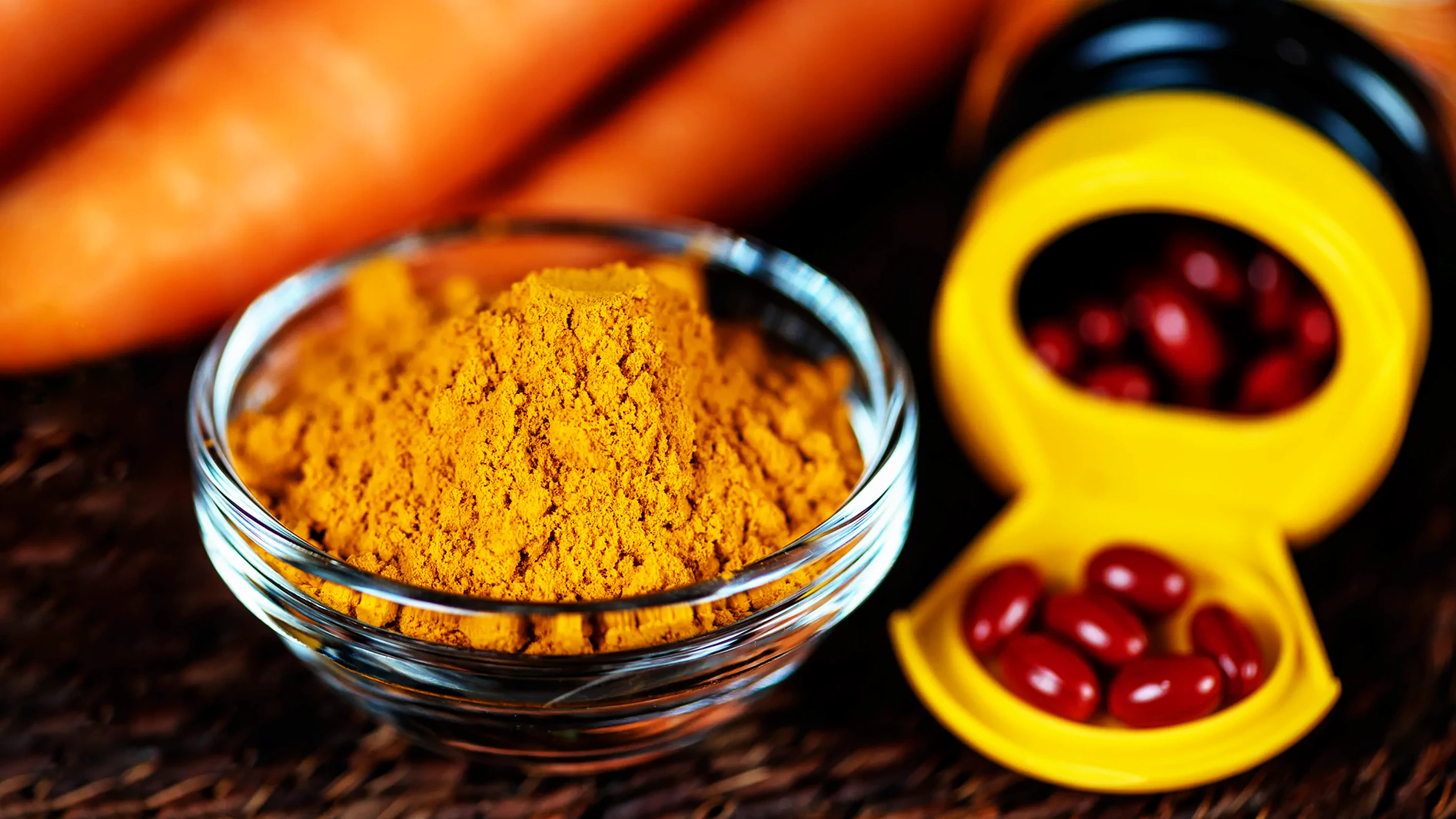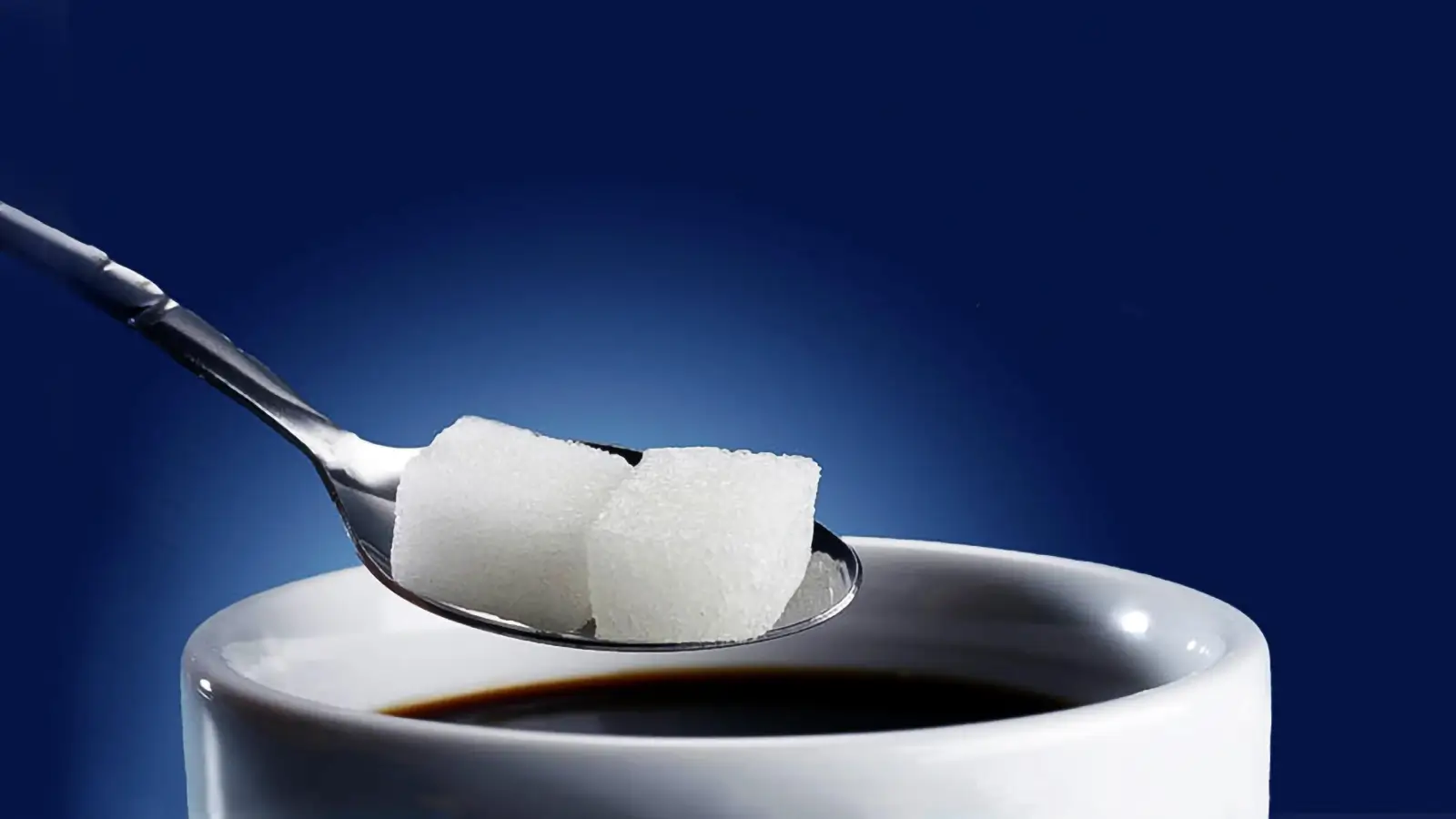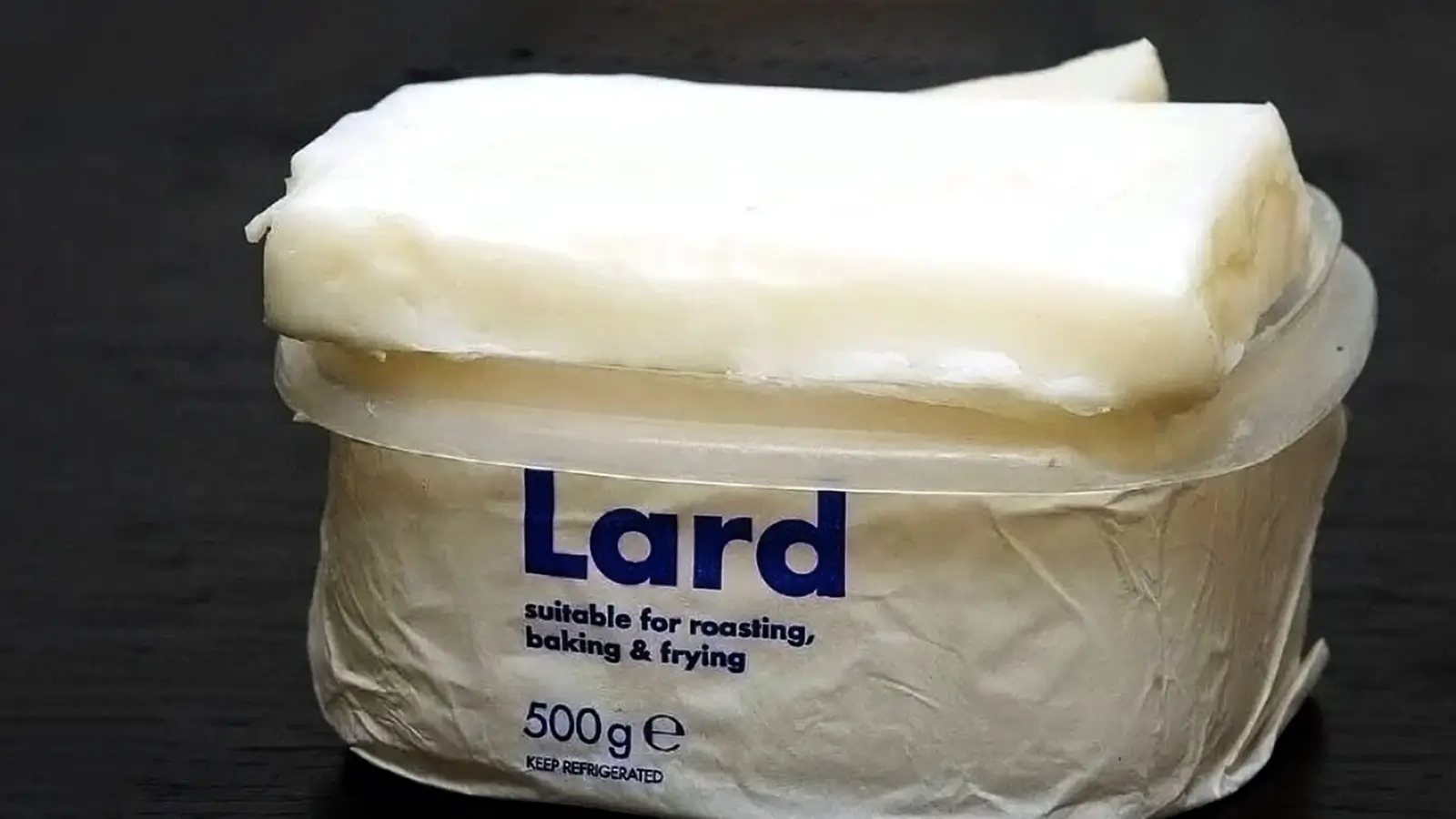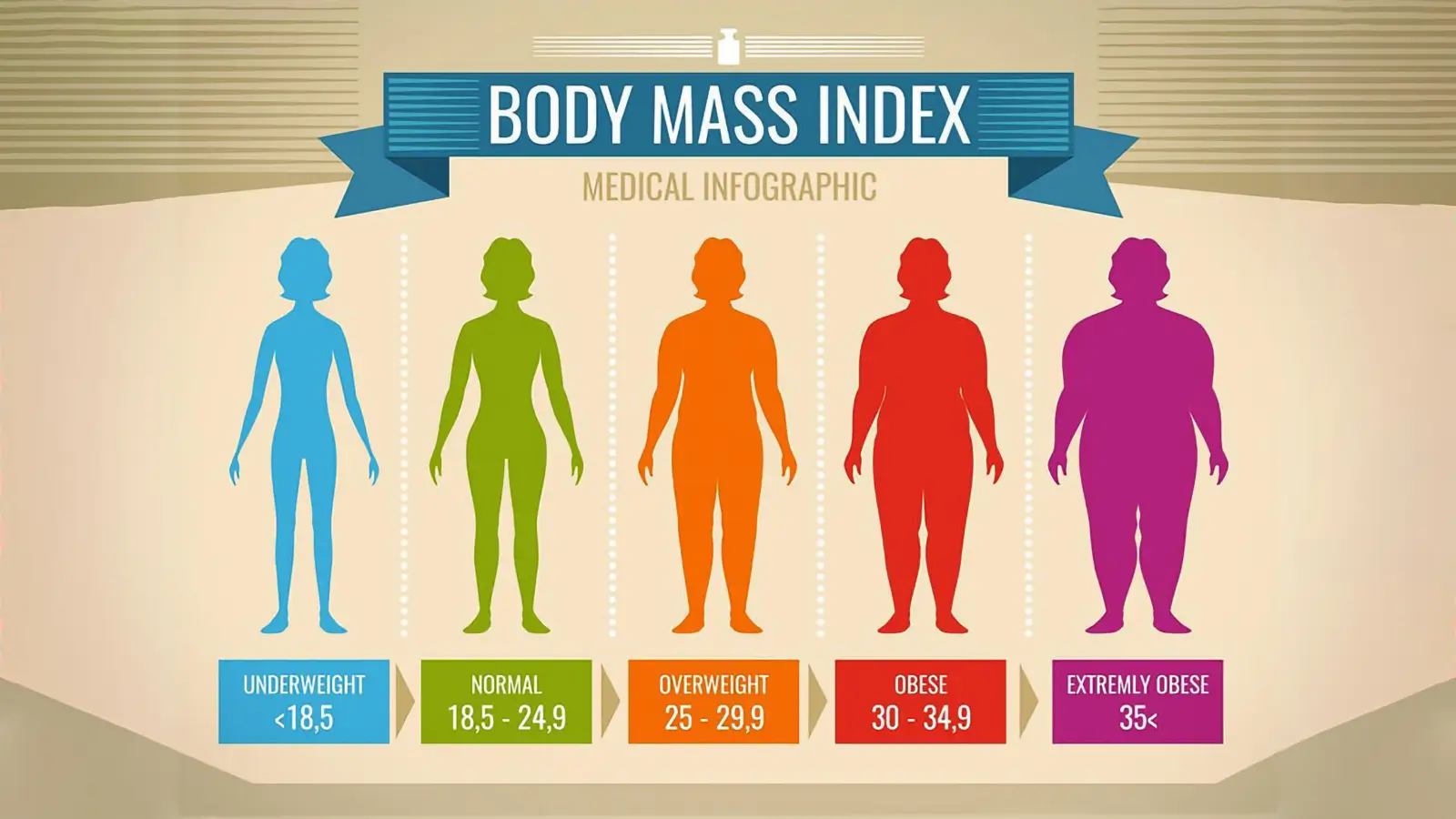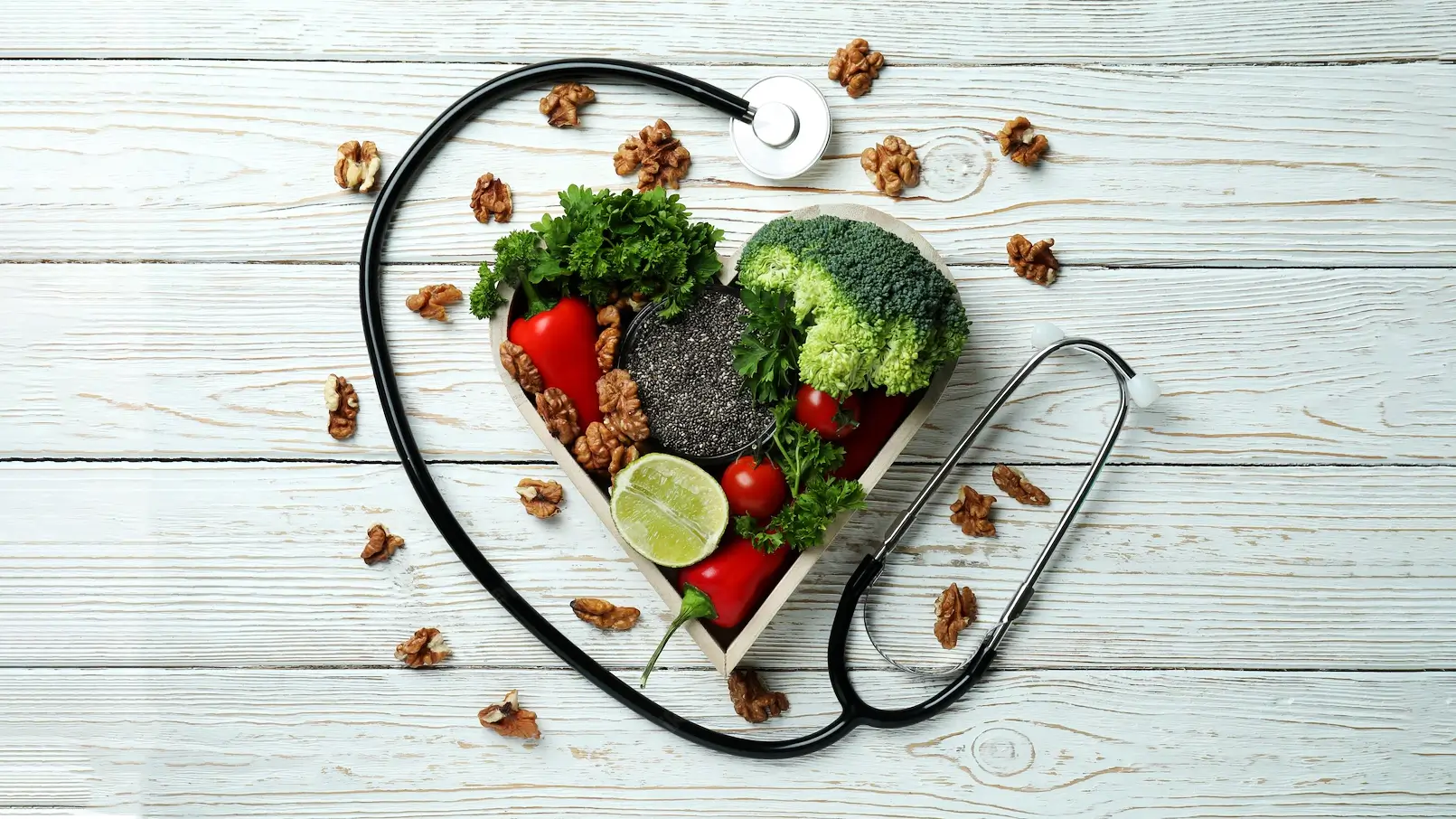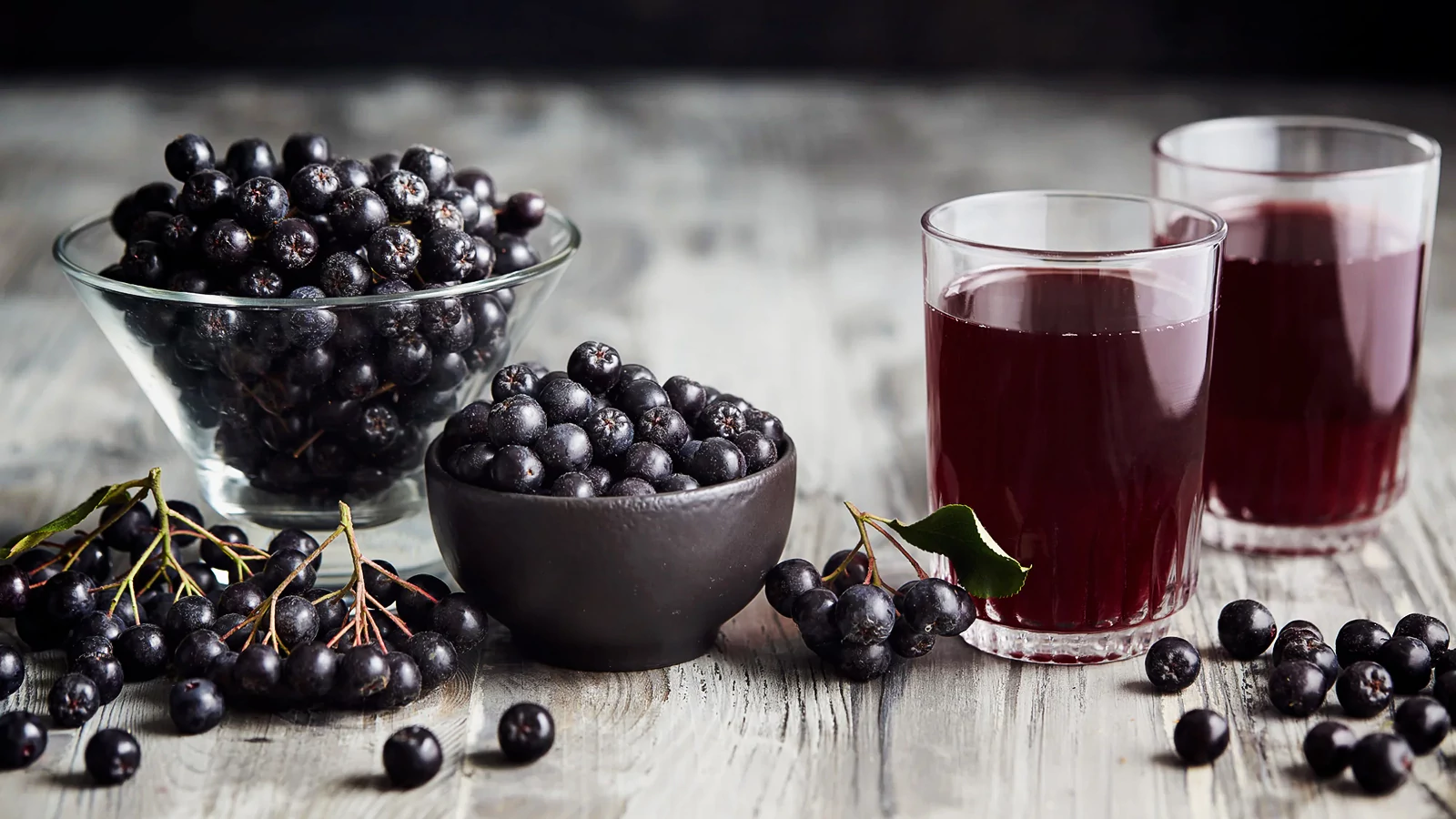Green Beans: Nutrition and Health Benefits
Green beans are low in calories and rich in natural compounds that can help you control your blood sugar, lower your cholesterol, and fight off free radicals.
Milos Pokimica
Written By: Milos Pokimica
Medically Reviewed by: Dr. Xiùying Wáng, M.D.
Updated September 25, 2023Key Takeaways:
– Green beans are harvested before the pods dry up and split open.
– Some studies have shown that green beans can reduce the risk of breast, colon, and prostate cancer because they have high amounts of chlorophyll, resistant starch, soluble and insoluble dietary fiber, and phenolic compounds (Aquino-Bolaños et al., 2021).
– Another benefit of green beans is that they can help control diabetes by lowering insulin production and blood sugar levels.
– Green beans can also help you improve your cardiovascular health by lowering your cholesterol and triglyceride levels.
– A cup of green beans has only 31 calories, which is less than 2% of your daily calorie intake. Of these calories, 77% come from carbs, 19% from protein, and 5% from fat.
– Green beans can be a good choice for dieting, as they can help you feel full and satisfied with fewer calories.
– They have a good amount of vitamin K, a fat-soluble vitamin that helps with blood clotting and bone health. They also have some vitamin C, however, vitamin C is heat sensitive. After cooking the amount of vitamin C left will be negligible.
– Green beans have about 4 grams of fiber per cup, which is about 16% of your daily recommended intake.
– The glycemic index (GI) of green beans is 32, which is considered low by the American Diabetes Association’s standards.
– Cooking increased the content of carotenoids (β-carotene, lutein, and zeaxanthin) in all types of green beans.
– Green beans are generally low FODMAP.
– Green beans have less fiber and carbohydrates which means they are less likely to cause fermentation and gas in the large intestine.
– Avoid eating any legumes raw even if they are unmatured varieties like green beans.
– You can reduce or get rid completely of all of the antinutrients by soaking or sprouting first and then by cooking beans before eating them. These methods can deactivate or remove most of the phytates, all of the lectins, and most of the enzyme inhibitors in beans and make them more digestible and nutritious.
Green Beans.
Legumes are amazing plants that can feed millions of people around the world. They are not only delicious, but also nutritious, as they are packed with protein, fiber, vitamins, and minerals. Legumes can also help balance the deficiency of some cereals because they have essential amino acids that cereals lack. That’s why many people in developing countries rely on legumes as their main source of protein.
One of the most important legumes in the world is the bean. There are many types of beans, but they all belong to the genus Phaseolus, which has up to 117 species. Most of these species originated in the Mesoamerican region, which is the area between Mexico and Central America. Some of the most popular beans are P. vulgaris and P. coccineus L., which were first domesticated in western Mexico. These beans are among the top five cultivated and consumed species in Mexico, and also among the top three worldwide.
But beans are not only good for their seeds. They also have edible pods that are known as green beans.
Green beans are harvested before the pods dry up and split open.
They can have different colors, from yellow and green to red and purple, depending on the variety. Green beans are very juicy because they have a lot of water in them. They also have minerals, vitamin A, and some protein and fiber. Green beans are classified as vegetables, and they are part of many people’s daily diet. They are also rich in antioxidants, which are substances that can protect your cells from damage. Some of the antioxidants in green beans are phenolic acids, flavonoids, lignans, and other compounds that have names that are hard to pronounce.
Health Benefits.
These antioxidants can do amazing things for your health. For example, they can help prevent or slow down the growth of cancer cells in your body. They can also fight against bacteria, viruses, spasms, and inflammation.
Some studies have shown that green beans can reduce the risk of breast, colon, and prostate cancer because they have high amounts of chlorophyll, resistant starch, soluble and insoluble dietary fiber, and phenolic compounds (Aquino-Bolaños et al., 2021).
Chlorophyll is a pigment that gives them their green color and helps them produce oxygen. Chlorophyll can bind to carcinogens, which are substances that can cause cancer, and prevent them from reaching your cells. It is used in detoxification protocols as one of the main supplements. They also contain flavonoids, which are a type of phenolic compound that have anti-inflammatory and anti-cancer properties. Flavonoids can modulate the activity of enzymes and hormones that are involved in cancer development and progression.
Another benefit of green beans is that they can help control diabetes by lowering insulin production and blood sugar levels.
This is because they have a lot of fiber that slows down the digestion of carbohydrates. Some people with diabetes can even reduce their need for insulin by up to 40% by eating green beans regularly.
Green beans can help you prevent or manage diabetes by regulating your blood sugar levels. They contain resistant starch and soluble and insoluble fiber, which can slow down the digestion and absorption of carbohydrates and reduce the spikes in insulin and glucose in your bloodstream. They also contain phenolic compounds, which are antioxidants that can protect your cells from oxidative stress and inflammation caused by high blood sugar.
Green beans can also help you improve your cardiovascular health by lowering your cholesterol and triglyceride levels.
They contain carotenoids, which are pigments that give them their yellow or orange hues and protect them from sun damage. Carotenoids can act as antioxidants and anti-inflammatory agents that can prevent the oxidation and accumulation of LDL cholesterol. They also contain polyamines, which are molecules that help them grow and repair their cells. Polyamines can regulate the synthesis and degradation of fats in the liver and prevent the elevation of triglycerides, which are fats that can increase your risk of heart disease.
Nutritional Profile Of Green Beans.
| Nutrient (100 grams serving) | Amount | Daily Value |
| Energy | 31 kcal | 1.5% |
| Protein | 1.83 g | 3% |
| Total lipid (fat) | 0.22 g | 1% |
| Carbohydrate, by difference | 6.97 g | 5.4% |
| Fiber, total dietary | 2.7 g | 8% |
| Sugars, total including NLEA | 3.26 g | – |
| Minerals | ||
| Calcium, Ca | 37 mg | 3% |
| Iron, Fe | 1.03 mg | 6% |
| Magnesium, Mg | 25 mg | 6% |
| Phosphorus, P | 38 mg | 3% |
| Potassium, K | 211 mg | 4% |
| Sodium, Na | 6 mg | 0.4% |
| Zinc, Zn | 0.24 mg | 2% |
| Copper, Cu | 0.069 mg | 6% |
| Manganese, Mn | 0.216 mg | 9% |
| Selenium, Se | 0.6 µg | – |
| Vitamins | ||
| Vitamin C, total ascorbic acid | 12.2 mg | 14% |
| Thiamin | 0.082 mg | 7% |
| Riboflavin | 0.104 mg | 8% |
| Niacin | 0.734 mg | 5% |
| Pantothenic acid | 0.225 mg | 5% |
| Vitamin B-6 | 0.141 mg | 8% |
| Folate, total | 33 µg | 8% |
| Choline, total | 15.3 mg | |
| Vitamin A, RAE | 35 µg | 4% |
| Carotene, beta | 379 µg | 3% |
| Vitamin A, IU | 690 IU | |
| Vitamin E (alpha-tocopherol) | 0.41 mg | 3% |
| Vitamin K (phylloquinone) | 43 µg | 36% |
| Antioxidants | ||
| Lutein + zeaxanthin | 640 µg | |
| Kaempferol | 0.5 mg | |
| Myricetin | 0.1 mg | |
| Quercetin | 2.7 mg |
Green beans are a good source of complex carbs. A cup of green beans has four grams of starch, which gives you quick energy. It also has almost three grams of fiber, which helps you control blood sugar levels, keep you full longer, and support your gut health.
Green beans are naturally fat-free, which makes them a great choice for weight management. A cup of green beans has only 0.2 grams of fat, which is negligible.
A cup of green beans has only 31 calories, which is less than 2% of your daily calorie intake. Of these calories, 77% come from carbs, 19% from protein, and 5% from fat.
However, be careful with how you cook and serve green beans, as some methods can add extra fat to them. For example, if you top them with butter or cheese, or make them into a casserole with cream and fried onions, you can increase the fat and calorie content significantly.

Green beans can be a good choice for dieting, as they can help you feel full and satisfied with fewer calories. They can also provide you with essential nutrients that your body needs to function well. However, you should be careful with how you prepare and consume green beans, as some methods can add extra fat, sodium, or sugar to them.
For example, canned green beans may contain a lot of sodium, so you should rinse and drain them before eating.
You should also avoid adding butter, cheese, cream, or fried onions to your green beans, as these can increase the calorie and fat content. Instead, you can steam, boil, or sauté your green beans with some garlic, lemon juice, or herbs for a healthy and tasty side dish.
Green beans contain some protein. A cup of green beans has almost two grams of protein, which is not a lot but still contributes to your daily needs.
They have a good amount of vitamin K, a fat-soluble vitamin that helps with blood clotting and bone health. They also have some vitamin C, however, vitamin C is heat sensitive. After cooking the amount of vitamin C left will be negligible.
Summary.Green beans are a good source of vitamin K and complex carbs, contain some protein, and are very low in fat and calories.Diabetes.
If you have diabetes, you know how important it is to watch what you eat. You need to keep your blood sugar levels under control and avoid foods that can spike them. In fact, some vegetables can actually help you manage your diabetes better. One of them is green beans.
Green beans are one of the best vegetables for diabetes because they have many benefits for your health.
They are low in calories, fat, and carbs, but high in fiber, antioxidants, vitamins, and minerals. They can help you lose weight, prevent heart disease, fight cancer, and lower blood sugar levels.
First of all, green beans are low in carbs, which means they won’t raise your blood sugar levels as much as other starchy vegetables like potatoes or corn. Green beans have only about 7 grams of carbs per cup, compared to 37 grams for potatoes and 29 grams for corn. That’s a big difference!
Secondly, green beans are high in fiber, which is great for your digestion and blood sugar control. Fiber slows down the absorption of sugar from your food into your bloodstream, which helps prevent spikes and crashes. Fiber also makes you feel full longer, which helps you eat less and lose weight.
Green beans have about 4 grams of fiber per cup, which is about 16% of your daily recommended intake.
Thirdly, green beans are rich in antioxidants, which are natural substances that protect your cells from damage caused by free radicals. Free radicals are unstable molecules that can cause inflammation, aging, and diseases like cancer and diabetes. Antioxidants can neutralize free radicals and reduce their harmful effects. Green beans have many types of antioxidants, such as phenolic acids, flavonoids, lignans, and other compounds that have names that are hard to pronounce.
These antioxidants can do amazing things for your health. For example, they can help prevent or slow down the growth of cancer cells in your body. They can also fight against bacteria, viruses, spasms, and inflammation. Some studies have shown that green beans can reduce the risk of breast, colon, and prostate cancer because they have high amounts of chlorophyll, resistant starch, soluble and insoluble dietary fiber, and phenolic compounds.
These beans also have a low glycemic index. The glycemic index (GI) of green beans is 32, which is considered low by the American Diabetes Association’s standards. As a guide, low glycemic foods are those with a GI of 55 or lower. The glycemic load (GL) of green beans is also low, equal to 2.1. Low GI and GL foods can help people with diabetes manage their blood sugar levels and prevent spikes and crashes.
In this study (Ezzat et al., 2022), scientists studied how green beans can improve the health of diabetic rats. They also looked at how green beans can work together with stem cells to regenerate the pancreas, which is the organ that produces insulin. They injected some diabetic rats with stem cells, which are cells that can turn into different types of cells in the body.
They extracted the natural compounds from green beans using ethanol. They found that the green bean compounds increased the insulin level in the blood by 4.4 times when combined with stem cells. This means that the green bean compounds helped the stem cells to home in the pancreas and turn into insulin-producing cells.
The green bean compounds also reduced the levels of malondialdehyde, nitric oxide, cholesterol, and triglycerides in the blood, which are indicators of oxidative stress and cardiovascular risk. Green bean compounds also increase the level of HDL, which is the good cholesterol that protects your arteries.
They tested their effects on two enzymes that are involved in digestion: pancreatic lipase and α-amylase. Pancreatic lipase breaks down fats, while α-amylase breaks down starches.
They found that green bean compounds inhibited both enzymes, but more strongly for pancreatic lipase. This means that green beans could help you lose weight by reducing the absorption of fats and carbohydrates.
Cooking Method.
The way the green beans are grown and cooked can affect their nutritional value and antioxidant capacity. In this study (Lima et al., 2017), scientists compared organic and conventional green beans and how they changed after different cooking methods.
They found that organic and conventional green beans had some differences in their initial raw state. Conventional green beans had more chlorophyll and total phenolics than organic green beans. Organic green beans have more flavonoids than conventional green beans, which are a type of polyphenols that have anti-inflammatory and anti-cancer properties. Polyamines and carotenoids were similar for both types of green beans.
Organic green beans also had higher antioxidant capacity than conventional green beans, which means they could scavenge more free radicals.
The study also looked at how different cooking methods changed the levels of these nutrients and antioxidants. They used three methods: boiling, microwave heating, and pressure cooking.
Cooking increased the content of carotenoids (β-carotene, lutein, and zeaxanthin) in all types of green beans.
Microwave heating boosted some polar compounds a little more, which are molecules that dissolve in water, while pressure cooking enhanced carotenoids. These results suggest that different cooking methods can affect the color and quality of green beans.
But what about the antioxidant capacity of green beans?
They found that all green bean extracts reduced the free radicals, regardless of the farming method or the cooking method. However, microwave cooking in both organic and conventional green beans showed the highest reduction, indicating a higher availability of antioxidants with this type of heat treatment.
Low FODMAP food.
The low FODMAP diet is part of the therapy for those with IBS and SIBO. If you’re following a low FODMAP diet, you might be wondering if they’re also good for your gut. After all, some vegetables can be tricky when it comes to FODMAPs, and you don’t want to trigger any unpleasant symptoms.
So, are green beans low in FODMAP? The answer is yes, as long as you stick to the recommended portion size. You can enjoy up to 100 grams of green beans without worrying about FODMAPs. That’s about a handful or a small cup of these delicious beans.
Green beans contain small amounts of fructans and GOS, which are two types of FODMAPs that can cause bloating, gas, and pain in some people. If you eat more than 100 grams of green beans, you might end up with more FODMAPs than your body can handle.
While green beans are generally low FODMAP, there are some things you need to watch out for when eating them.
- Avoid eating too many green beans at once. As mentioned earlier, green beans contain some FODMAPs that can add up if you eat more than 100 grams. To avoid this, measure your portion size before eating, and don’t go back for seconds.
- Avoid eating green beans that have been cooked with high FODMAP ingredients. Some common culprits are garlic, onion, cream, cheese, honey, or dried fruits. These ingredients can increase the FODMAP content of your green beans and cause digestive distress. If you’re eating out or at someone else’s house, ask how the green beans were prepared and avoid them if they contain any high FODMAP ingredients.
- Avoid eating canned or frozen green beans that have added sugars or preservatives. These additives can also increase the FODMAP content of your green beans and make them less healthy. Always check the label before buying canned or frozen green beans and look for ones that have only green beans and water as ingredients.
Gas And Bloating.
Green beans are a type of legume, but they are different from other beans in terms of their gas production. Green beans are not fully mature and will have less resistant starch in them than fully mature beans.
Resistant starch is a type of starch that escapes digestion in your small intestine and reaches your colon, where it can feed your beneficial bacteria. Resistant starch can have many health benefits, such as lowering your blood sugar and cholesterol levels, improving your insulin sensitivity, and increasing your satiety and weight control. It will also create gas and bloating as a side effect.
Green beans have less fiber and carbohydrates which means they are less likely to cause fermentation and gas in the large intestine.
However, this does not mean that green beans are completely gas-free.
Green beans still contain some fiber and lectins, which are proteins that can bind to carbohydrates and make digestion harder. Therefore, some people may still experience gas and bloating after eating green beans, especially if they eat too much or have a sensitive gut.
To reduce the gas and bloating caused by green beans, you can try some of these tips:
- Soak the green beans in water for 4-6 hours before cooking them. This will start a sprouting process that will remove some amount of antinutrients like lectins and will make them easier to digest.
- Cook the green beans thoroughly until they are soft and tender. This can also help break down some of the lectins and fiber.
- Chew the green beans well before swallowing them. This can help your saliva and digestive enzymes start the digestion process and reduce the workload for your gut.
- Avoid eating green beans with foods that can increase gas production, such as garlic, onion, broccoli, cauliflower, cabbage, or dairy products.
If you are prone to gas and bloating, you may want to limit your intake of green beans or follow the tips above to prevent discomfort.
Many people prefer the crisp and crunchy texture of fresh beans, especially in salads over the soft cooked ones that are canned. Not to mention, canned green beans often lose their vibrant green color and look dull and grayish. However, green beans are still beans.
Avoid eating any legumes raw even if they are unmatured varieties like green beans.
What Are The Side Effects Of Green Beans?
Beans contain some compounds that can affect your digestion, and metabolism, or cause inflammation. These compounds are called enzyme inhibitors, lectins, phytates, and oligosaccharides. They can have both good and bad effects on your body, depending on how much you eat and how you prepare them. Let me explain.
Enzyme inhibitors are substances that can block or slow down the activity of enzymes, which are proteins that help you digest and use the food you eat.
These enzyme inhibitors can help you lower your blood sugar and insulin levels by delaying the breakdown and absorption of carbs. They can also help you feel fuller and eat less by increasing your satiety and fullness. They can also help you prevent or manage obesity, diabetes, and metabolic syndrome by improving your insulin sensitivity and glucose tolerance.
On the other hand, they can also interfere with the digestion and absorption of protein and other nutrients by blocking the enzymes that break them down.
Lectins are proteins that can stick to carbohydrates on the surface of cells and affect their function. Some beans have lectins that can bind to cells in your blood vessels, gut, or immune system.
These lectins can be good or bad for you. On the one hand, they can help you lower your blood pressure and cholesterol levels by binding to receptors on the walls of blood vessels and improving their elasticity and permeability. They can also help you fight off infections by binding to pathogens (such as bacteria or viruses) and preventing them from attaching to your cells. They can also help you modulate your immune system by stimulating or suppressing the activity of certain immune cells.
On the other hand, they can also interfere with the absorption of nutrients by binding to them and preventing them from entering your cells. They can also cause gut problems, such as nausea, vomiting, diarrhea, or bleeding by damaging the lining of your stomach or intestines. They can also cause allergic reactions or inflammation by activating your immune system or triggering the release of cytokines.
Phytates are compounds that can bind to minerals (such as calcium, iron, zinc, magnesium, etc.) and form insoluble complexes that cannot be absorbed by your body. Some beans have phytates that can reduce the availability of minerals in your diet.
These phytates can be good or bad for you. On the one hand, they can help you prevent or treat kidney stones, osteoporosis, and cancer by reducing the formation of crystals, preventing bone loss, and inhibiting tumor growth.
On the other hand, they can also interfere with the absorption of minerals by binding to them and preventing them from entering your cells.
You can reduce or get rid completely of all of these antinutrients by soaking or sprouting first and then by cooking beans before eating them. These methods can deactivate or remove most of the phytates, all of the lectins, and most of the enzyme inhibitors in beans and make them more digestible and nutritious.
One more side effect I have to mention is allergies. Allergies to legumes, which include beans, peas, and lentils, are not very common, but they do exist. And among legumes, peas, and lentils are more likely to cause allergic reactions than green beans. But that doesn’t mean green beans are completely safe. There have been a few cases of green bean allergy reported by doctors. Scientists have even found one of the proteins in green beans that can trigger an allergic response (Zoccatelli et al., 2010).
But don’t worry too much. Green bean allergy is very rare, and most people can enjoy this healthy and delicious vegetable without any problems.
FAQ
References:
- Cisneros-Zevallos, L., & Minatel, I. O. (2017). Cooking processes increase bioactive compounds in organic and conventional green beans. International journal of food sciences and nutrition, 68(8), 919–930. https://doi.org/10.1080/09637486.2017.1324563
- Ezzat, S. M., Abdel Rahman, M. F., Salama, M. M., Mahrous, E. A., & El Bariary, A. (2022). Non-polar metabolites of green beans (Phaseolus vulgaris L.) potentiate the antidiabetic activity of mesenchymal stem cells in streptozotocin-induced diabetes in rats. Journal of food biochemistry, 46(2), e14083. https://doi.org/10.1111/jfbc.14083
- Zoccatelli, G., Pokoj, S., Foetisch, K., Bartra, J., Valero, A., Del Mar San Miguel-Moncín, M., Vieths, S., & Scheurer, S. (2010). Identification and characterization of the major allergen of green bean (Phaseolus vulgaris) as a non-specific lipid transfer protein (Pha v 3). Molecular Immunology, 47(7–8), 1561–1568. https://doi.org/10.1016/j.molimm.2010.01.009
- Chaurasia, S. (2020). Green beans. In Elsevier eBooks (pp. 289–300). https://doi.org/10.1016/b978-0-12-812780-3.00017-9
- Aquino-Bolaños, E. N., Garzón-García, A. K., Alba-Jiménez, J. E., Chávez-Servia, J. L., Vera-Guzmán, A. M., Carrillo-Rodríguez, J. C., & Santos-Basurto, M. A. (2021). Physicochemical Characterization and Functional Potential of Phaseolus vulgaris L. and Phaseolus coccineus L. Landrace Green Beans. Agronomy, 11(4), 803. https://doi.org/10.3390/agronomy11040803
Related Posts
Do you have any questions about nutrition and health?
I would love to hear from you and answer them in my next post. I appreciate your input and opinion and I look forward to hearing from you soon. I also invite you to follow us on Facebook, Instagram, and Pinterest for more diet, nutrition, and health content. You can leave a comment there and connect with other health enthusiasts, share your tips and experiences, and get support and encouragement from our team and community.
I hope that this post was informative and enjoyable for you and that you are prepared to apply the insights you learned. If you found this post helpful, please share it with your friends and family who might also benefit from it. You never know who might need some guidance and support on their health journey.
– You Might Also Like –

Learn About Nutrition
Milos Pokimica is a doctor of natural medicine, clinical nutritionist, medical health and nutrition writer, and nutritional science advisor. Author of the book series Go Vegan? Review of Science, he also operates the natural health website GoVeganWay.com
Medical Disclaimer
GoVeganWay.com brings you reviews of the latest nutrition and health-related research. The information provided represents the personal opinion of the author and is not intended nor implied to be a substitute for professional medical advice, diagnosis, or treatment. The information provided is for informational purposes only and is not intended to serve as a substitute for the consultation, diagnosis, and/or medical treatment of a qualified physician or healthcare provider.NEVER DISREGARD PROFESSIONAL MEDICAL ADVICE OR DELAY SEEKING MEDICAL TREATMENT BECAUSE OF SOMETHING YOU HAVE READ ON OR ACCESSED THROUGH GoVeganWay.com
NEVER APPLY ANY LIFESTYLE CHANGES OR ANY CHANGES AT ALL AS A CONSEQUENCE OF SOMETHING YOU HAVE READ IN GoVeganWay.com BEFORE CONSULTING LICENCED MEDICAL PRACTITIONER.
In the event of a medical emergency, call a doctor or 911 immediately. GoVeganWay.com does not recommend or endorse any specific groups, organizations, tests, physicians, products, procedures, opinions, or other information that may be mentioned inside.
Editor Picks –
Milos Pokimica is a health and nutrition writer and nutritional science advisor. Author of the book series Go Vegan? Review of Science, he also operates the natural health website GoVeganWay.com
Latest Articles –
Top Health News — ScienceDaily
- Why consciousness exists at allon December 15, 2025
Consciousness evolved in stages, starting with basic survival responses like pain and alarm, then expanding into focused awareness and self-reflection. These layers help organisms avoid danger, learn from the environment, and coordinate socially. Surprisingly, birds show many of these same traits, from subjective perception to basic self-awareness. This suggests consciousness is far older and more widespread than once believed.
- AI found a way to stop a virus before it enters cellson December 15, 2025
Researchers discovered a hidden molecular “switch” that herpes viruses rely on to invade cells. By combining AI, simulations, and lab experiments, they identified and altered a single amino acid that shut down viral entry. What once might have taken years was achieved far faster using computational tools. The findings open new possibilities for designing future antiviral treatments.
- New study shows some plant-based diets may raise heart disease riskon December 15, 2025
Researchers tracking over 63,000 adults found that high-quality, minimally processed plant foods significantly reduce cardiovascular risk. But when those plant foods are ultra-processed, the advantage disappears—and can even backfire. Some ultra-processed plant diets increased risk by 40%. The study urges a shift toward whole, naturally nutrient-rich plant foods.
- These simple habits could make your brain 8 years younger, study findson December 15, 2025
New research shows that your brain’s “true age” can shift dramatically depending on how you live, with optimism, restorative sleep, stress management, and strong social support acting like powerful anti-aging tools. Using advanced MRI-based brain-age estimates, scientists found that people with multiple healthy lifestyle factors had brains up to eight years younger than expected — even among those living with chronic pain.
- Anxiety and insomnia linked to sharp drops in key immune cellson December 15, 2025
Natural killer cells act as the immune system’s rapid-response team, but the stress of anxiety and insomnia may be quietly thinning their ranks. A study of young women in Saudi Arabia found that both conditions were linked to significantly fewer NK cells—especially the circulating types responsible for destroying infected or abnormal cells. As anxiety severity increased, NK cell levels dropped even further, suggesting a stress-driven weakening of immune defenses.
- Cannabis compounds show unexpected power against ovarian canceron December 15, 2025
Scientists have discovered that key compounds from cannabis—CBD and THC—show surprisingly strong effects against ovarian cancer cells. Used together, they slow cell growth, reduce colony formation, and may even block the cancer’s ability to spread. Even more promising, the treatment caused minimal harm to healthy cells and appears to work by restoring a disrupted signaling pathway that fuels tumor growth.
- Mayo Clinic neurosurgeon reveals 8 back pain myths to stop believingon December 15, 2025
Back pain is wrapped in persistent myths, but many are far from the truth. From misconceptions about heavy lifting and bed rest to confusion over posture, exercise, and surgery, Dr. Meghan Murphy breaks down what really causes pain and what actually helps. Her insights reveal that everyday habits, movement, and smart prevention often make a bigger difference than people realize.
PubMed, #vegan-diet –
- Healthful and Unhealthful Plant-Based Diets and Their Association with Cardiometabolic Targets in Women Diagnosed with Breast Cancer: A Cross-Sectional Analysis of a Lifestyle Trialon December 11, 2025
CONCLUSIONS: Maintaining cardiometabolic risk factors within normal ranges is clinically relevant in BCS, and this may be more likely when a plant-based diet is consumed, especially if low in unhealthy plant foods.
- Dietary and Lifestyle Patterns and Their Associations with Cardiovascular and Inflammatory Biomarkers in Vegans, Vegetarians, Pescatarians, and Omnivores: A Cross-Sectional Studyon December 11, 2025
Background: Plant-based diets are associated with reduced cardiometabolic risk, yet the influence of lifestyle behaviors on these benefits remains insufficiently understood. Objective: To assess the combined impact of dietary patterns and lifestyle behaviors on body composition, lipid profiles, and inflammatory biomarkers in healthy young adults. Methods: In this cross-sectional study, 155 participants aged 18-39 years were categorized into four dietary groups: vegans (n = 48), vegetarians (n […]
- Functional and Nutritional Properties of Lion’s Mane Mushrooms in Oat-Based Desserts for Dysphagia and Healthy Ageingon December 11, 2025
Hericium erinaceus (Lion’s Mane mushroom) is a medicinal species recognised for its neuroprotective and antioxidant properties. This study investigated its potential as a functional ingredient in oat milk-based desserts formulated for individuals with dysphagia. Freeze-dried Lion’s Mane powder (LMP), containing high-quality protein (~16%, amino acid score 88%), dietary fibre (~31%), and phenolic compounds (72.15 mg GAE/g), was incorporated at varying levels using gelatin or iota-carrageenan […]
- “A football team with no midfield”: A qualitative analysis of anti-vegan stigma in Italyon December 7, 2025
A growing body of research has demonstrated the prevalence of unfavourable attitudes towards individuals who adhere to a vegan diet and has provided empirical evidence to support the existence of an anti-vegan ideology. The present study aims to contribute to extant knowledge by examining the social perception of veganism and vegans in Italy. Italy is a nation characterised by a traditional culture of food that serves as a significant catalyst for collective identification and national pride….
- Plant-based dietary index on the Mediterranean and a vegan diet: a secondary analysis of a randomized, cross-over trialon December 5, 2025
CONCLUSION: These findings suggest that, replacing animal products even with the “unhealthful” plant-based foods on a vegan diet was associated with weight loss.
Random Posts –
Featured Posts –
Latest from PubMed, #plant-based diet –
- Identification of effective plant-based oils for use in aquafeed: An evaluation of impact on gamete quality and developmental success using zebrafish (Danio rerio) as a screening organismby Seyed-Mohammadreza Samaee on December 14, 2025
To evaluate the effectiveness of zebrafish as a screening system for identifying appropriate plant oils (POs) for aquafeed, Artemia nauplii (AN) were enriched with three single- cultivar olive oils (OO): Koroneiki, Parseh, and Arghavan. The resulting AN (ANKor, ANPar, ANArg, and AN36 [36 h starved AN, control]) were then fed to 360 fish (3.5 cm) for one month. The fatty acid (FA) profile of the AN was reflected in the ova and influenced both sperm motility and density, which in turn affected […]
- The Effect of Dietary Interventions on Human Vascular Function in the Context of Acute Psychological Stress: A Scoping Reviewby Rosalind Baynham on December 14, 2025
Episodes of acute psychological stress increase the risk for cardiovascular diseases, partially through stress-induced impairments in vascular function. During psychologically stressful periods, individuals are more likely to consume unhealthy foods and fewer fruits and vegetables. Yet, the impact of dietary choices and their nutritional composition on vascular function in the context of psychological stress is unclear. In this scoping review, comprehensive database searches were carried out […]
- Plant-based diets, gut microbiota, blood metabolome, and risk of colorectal, liver and pancreatic cancers: results from a large prospective cohort study of predominantly low-income Americansby Fangcheng Yuan on December 14, 2025
CONCLUSIONS: A diet high in healthy plant foods and low in animal foods was inversely associated with liver cancer risk and with CRC risk among screening-naïve participants. These associations may be partly mediated through gut microbiota and systemic metabolism.
- Vegetarian diet and likelihood of becoming centenarians in Chinese adults aged 80 years or older: a nested case-control studyby Yaqi Li on December 14, 2025
CONCLUSIONS: Targeting individuals of advanced age (80+ years) in China, we found that individuals following vegetarian diet had lower likelihood of becoming centenarians relative to omnivores, underscoring the importance of a balanced high-quality diet with animal- and plant-derived food composition for exceptional longevity, especially in the underweight oldest-old.
- Priority of nutrition and exercise in depression management: triangulating mini-review of past and recent evidence with clinical practice guidelinesby Shannon Rogers on December 14, 2025
CONCLUSIONS: Disparities that exist in leading depression management guidelines vis-à-vis inclusion of evidence-informed nutrition and PA/PE recommendations, warrant reconciliation. Evidence supporting anti-depressant WFPB nutrition and limiting pro-inflammatory animal-sourced food and UPF and supporting anti-inflammatory aerobic exercise and resistance training warrants being translated into national/international depression management guidelines as consistently as recommendations for…
- The effect of a diet based on vegetable and dairy protein on biochemical and functional indicators of sarcopenia in patients with liver cirrhosis: a randomized controlled trialby Mahdiyeh Taghizadeh on December 13, 2025
CONCLUSIONS: In conclusion, a vegetable and dairy protein-based diet effectively inhibited significant elevations in ammonia levels compared to the standard diet in persons with liver cirrhosis; however, anthropometric parameters and muscle function did not differ between two groups.

